Inflatable Windsurf Boards
It was long thought that windsurfing on inflatable boards was only suitable for quietly gliding along on flat water on a sunny day. But thanks to advances in construction technology we now have inflatable boards that are also suitable for performance windsurfing.
There are some differences between brands with how they make their inflatable windsurf boards. On this page we explain the different technologies and highlight their advantages and disadvantages.
Inflatable boards versus hard boards
Inflatable boards have some clear advantages over hard boards:
- Durability. While nose damage is very common for hard boards, you can keep smashing your mast on an inflatable board without damaging it.
- Small package. You can carry the board inside a backpack wherever you like. And it doesn't take up much storage space.
- Price. There is a wide price range for inflatable boards. Notwithstanding this, you can find proper inflatable boards for about half the price of hard boards.
But also some disadvantages...
- Stiffness. Although the stiffness of inflatable boards has been much improved with new construction technologies, hard boards do have a more direct feel and better performance.
- Gybing. Due to the thick rails, it is hard for inflatables to achieve good bite for proper carving gybes.
- Wave riding. The thick and rounded rails also mean that inflatables are not suitable for wave riding.
- Weight. Inflatable boards are usually a little heavier than hard boards.
In conclusion
Inflatable boards are the most budget-friendly and trouble-free way to have fun windsurfing. However, if your windsurfing skills improve and you want to explore new boundaries – whether in racing, freestyle or wave – you probably want to invest in a hard board.
Board types
Each board has it's own purpose and special features.
WindSUP
This is where it started: the idea of putting a sail on an inflatable SUP board. The added centre-fin prevents sideways drifting. The designs are suitable for low-wind conditions. They are not intended for or suitable for use in planing wind conditions.
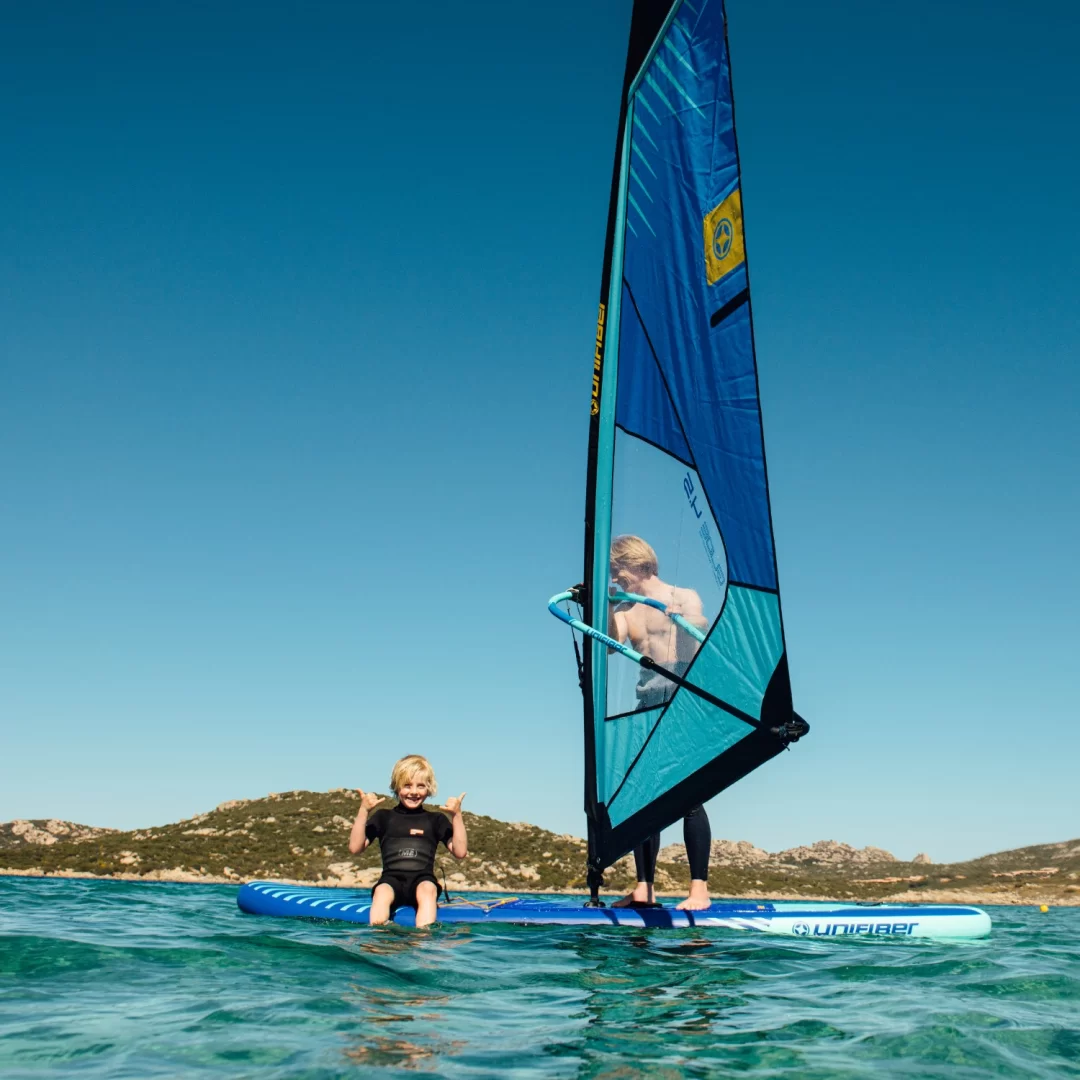
Beginner boards
This is where the advantages of an inflatable board are maximised. The extreme durability and user-friendliness make them perfect boards for those new to windsurfing. And if the centre fin is removed they can fast-track learners to their first planing experiences. Some models also allow for footstraps to be fitted.
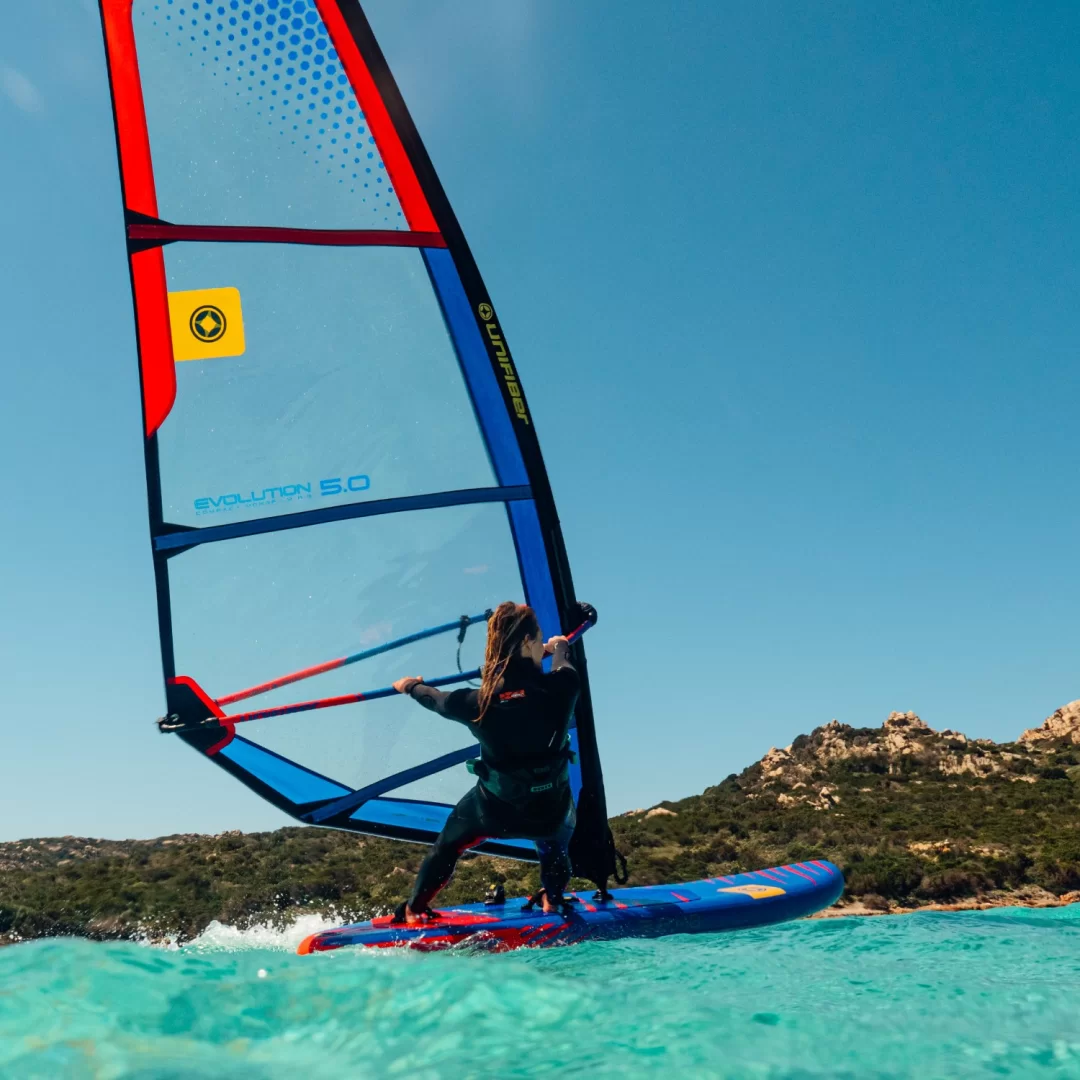
Freeride boards
These inflatable boards are made for easy planing. The centre fin is omitted for a cleaner hull shape. The PVC rail improves water release for less drag at higher speeds, and more grip when carving. These boards provide for the easiest progression to “real” (full!) planing windsurfing.
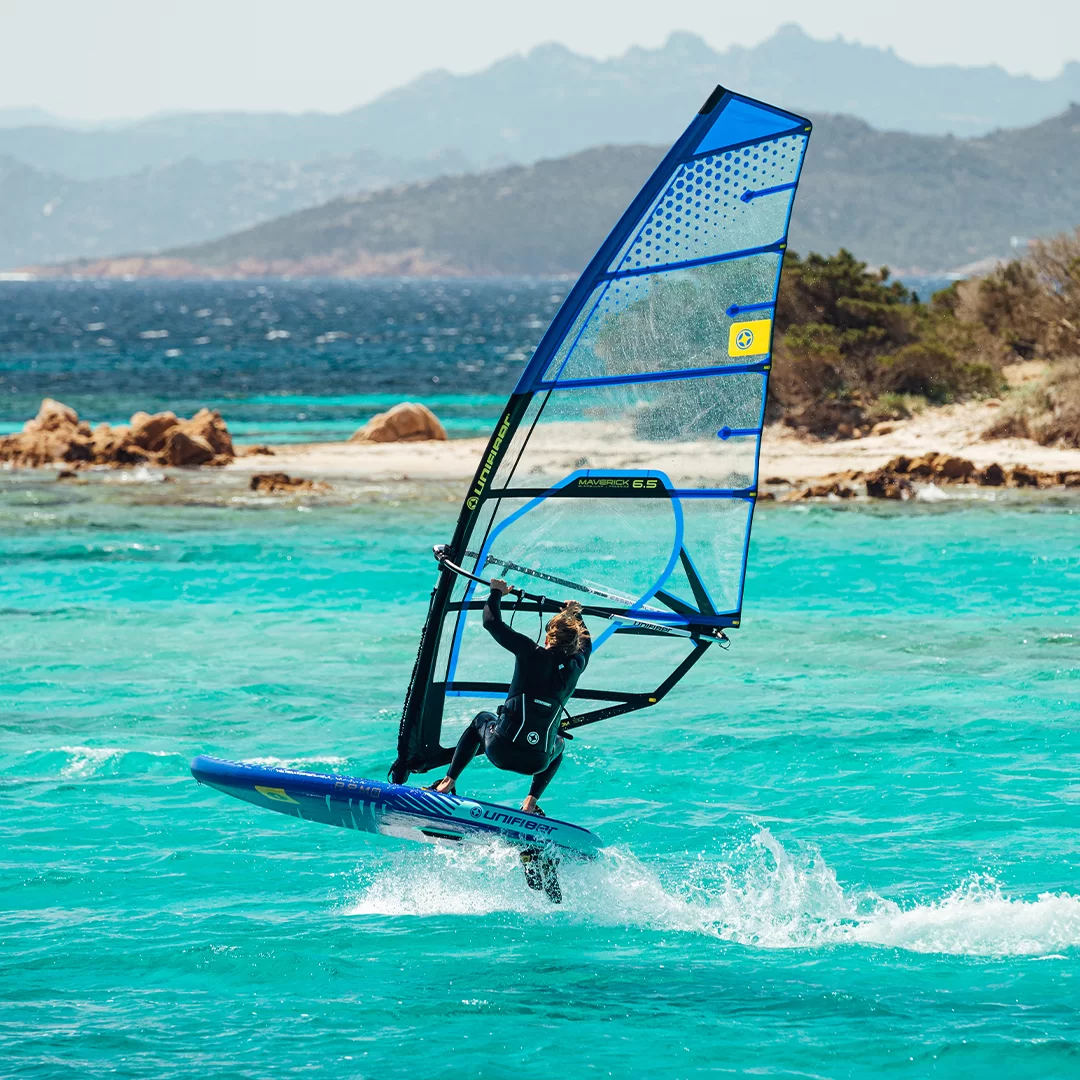
Performance boards
Some brands have developed inflatable boards for more radical purposes, including models with the Deep Tuttle fin box system to allow for use with powerful slalom fins. The boards often utilize high-performing materials such as Kevlar or Dyneema to increase their stiffness. Speeds over 70 kph have been recorded on these boards! Unfortunately, top-end technology sends the price rocketing too…
Board construction
The construction of a board influences its stiffness, weight and durability. Stiffness is very important, as a rigid board has much less drag than a board that bends under the load of the surfer.
All inflatable boards are made with “dropstitch” PVC. This material is made of 2 layers of fibre-reinforced PVC that are connected by vertical threads (see below image). The length of these threads determines the thickness of the board. Because all the threads have the same length, the top and bottom of inflatable boards are flat – without contours. The scoop and/or rocker of the board is achieved by shaping of the sidewalls, and by making the top layer a bit shorter than the bottom layer.
There are 3 main dropstitch technologies
- Single layer (SL). Simple and budget-friendly. Best suited for boards that will receive light recreational use.
- Double layer. The board is reinforced by an extra layer of fibre-reinforced PVC laminate. Heavier than single layer, but much stiffer and much more durable.
- Fusion Composite Dropstitch (FCD). The best available. More fibres, less PVC and less glue than the double layer construction. This makes the boards lighter, stiffer and very durable.
Some brands add stringers with Kevlar or Dyneema fibers to make the boards even stiffer. But this also makes the boards very expensive.
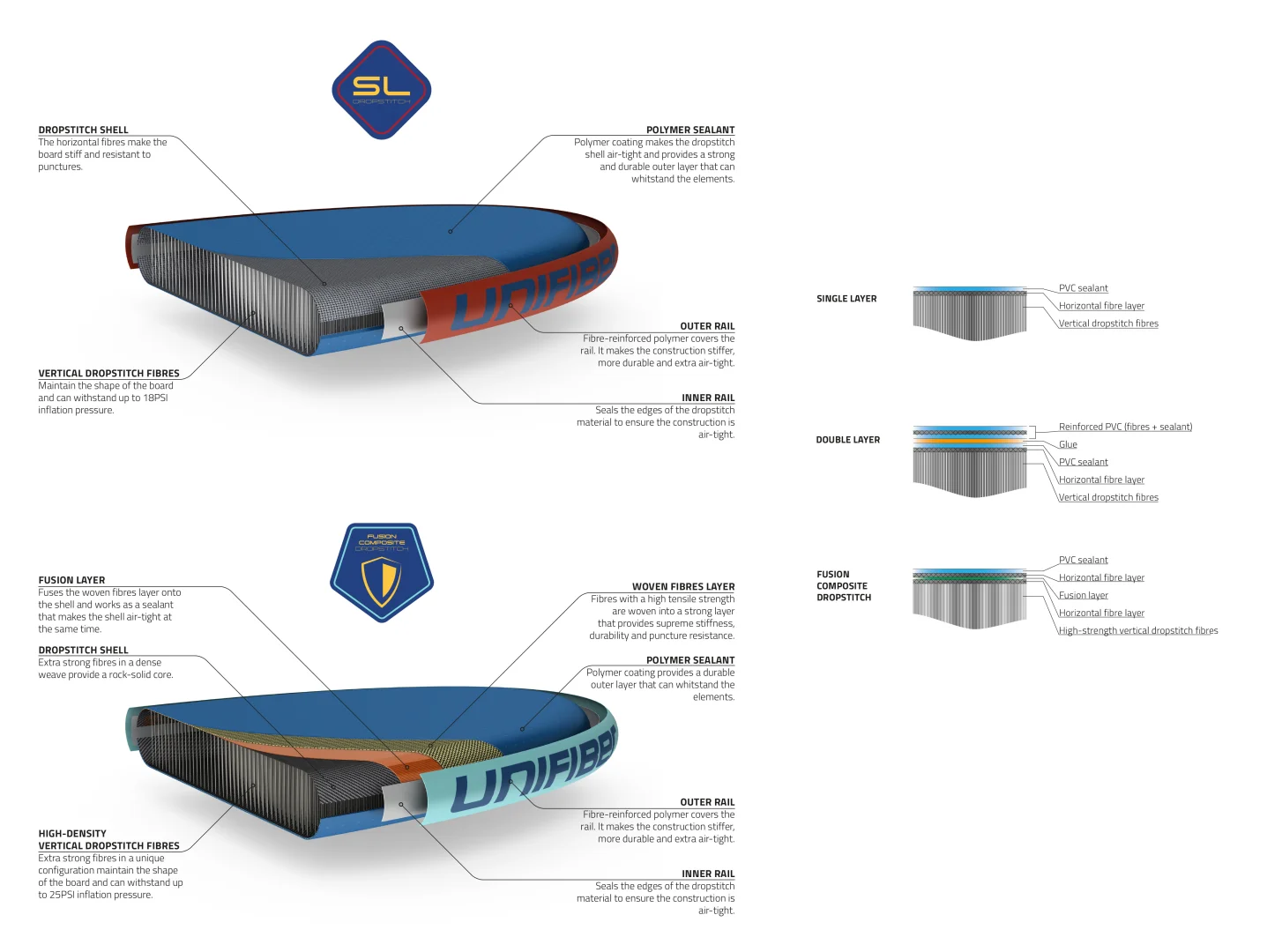
Price vs quality
A higher price doesn’t necessarily make a board better. However, there are a lot of cheap inflatable boards on the market with poor build quality and sub-standard quality control. A badly built board can lead to life-threatening situations, so be wise when buying an inflatable board. We advise that you buy from a shop that specialises in watersports. They can help you find a suitable and reliable board that also represents good value.
Fin boxes
The finbox of your board defines the fins it can use. And although most inflatable boards are supplied with fins, they do have a major impact on performance, usability and price. So it's worth looking at the options...
- US box. The hard plastic fins are included with the board. The fins are detachable, and the fin box is small. This makes the rolled-up package very compact. A downside is that the fins and finbox are not very stiff. That is why our Elevate freeride boards use a twin fin set-up: twice the fin area for high-wind conditions. This option represents excellent value: good performance, convenient, low price.
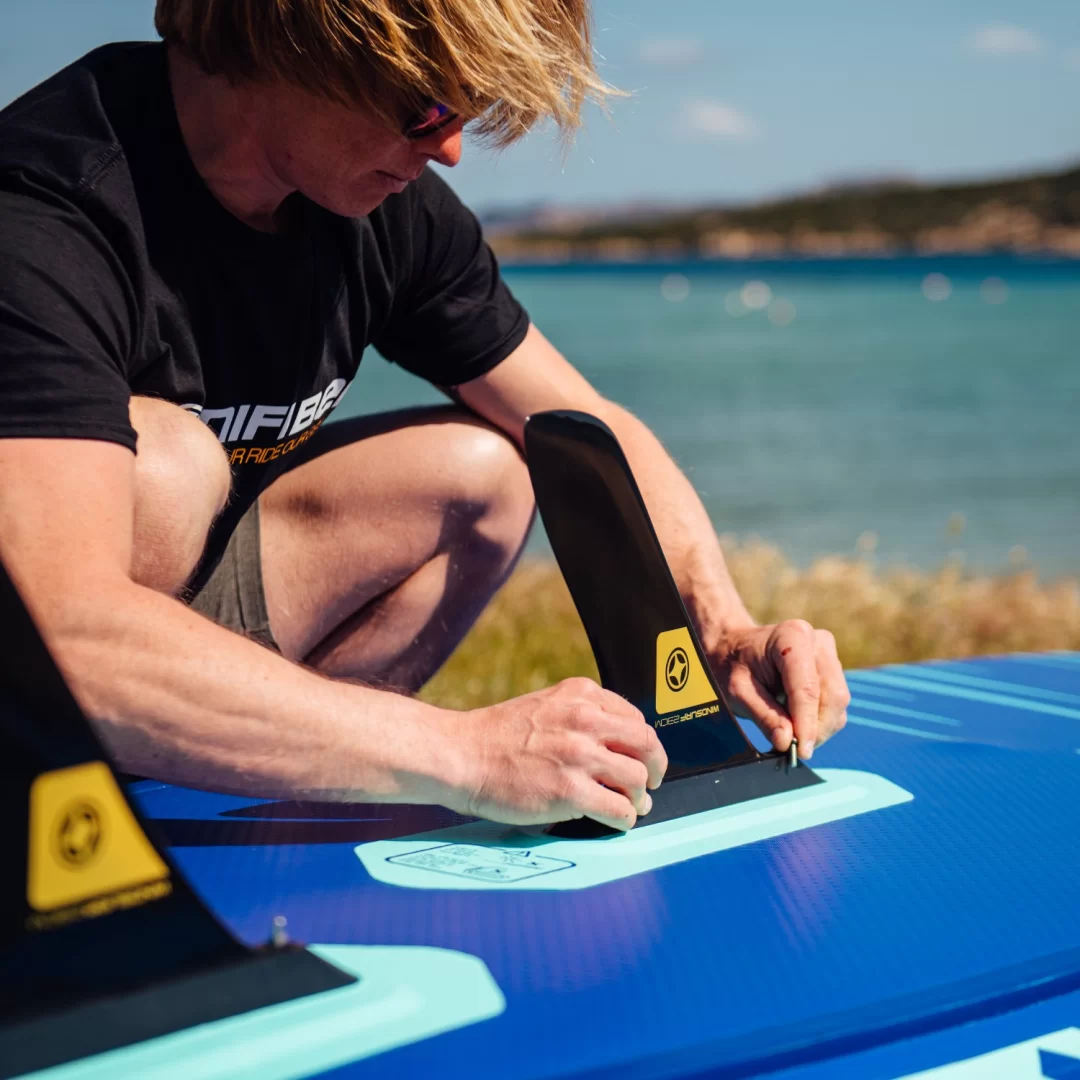
- Deep tuttle box. A large plastic block is laminated inside the board to accommodate high-performance fins. This finbox is stiffer than the US-box, increasing the performance of the boards. Downside: the large plastic block makes it harder to roll-up the board. And the price is higher (mostly due to the higher price of the fins themselves).
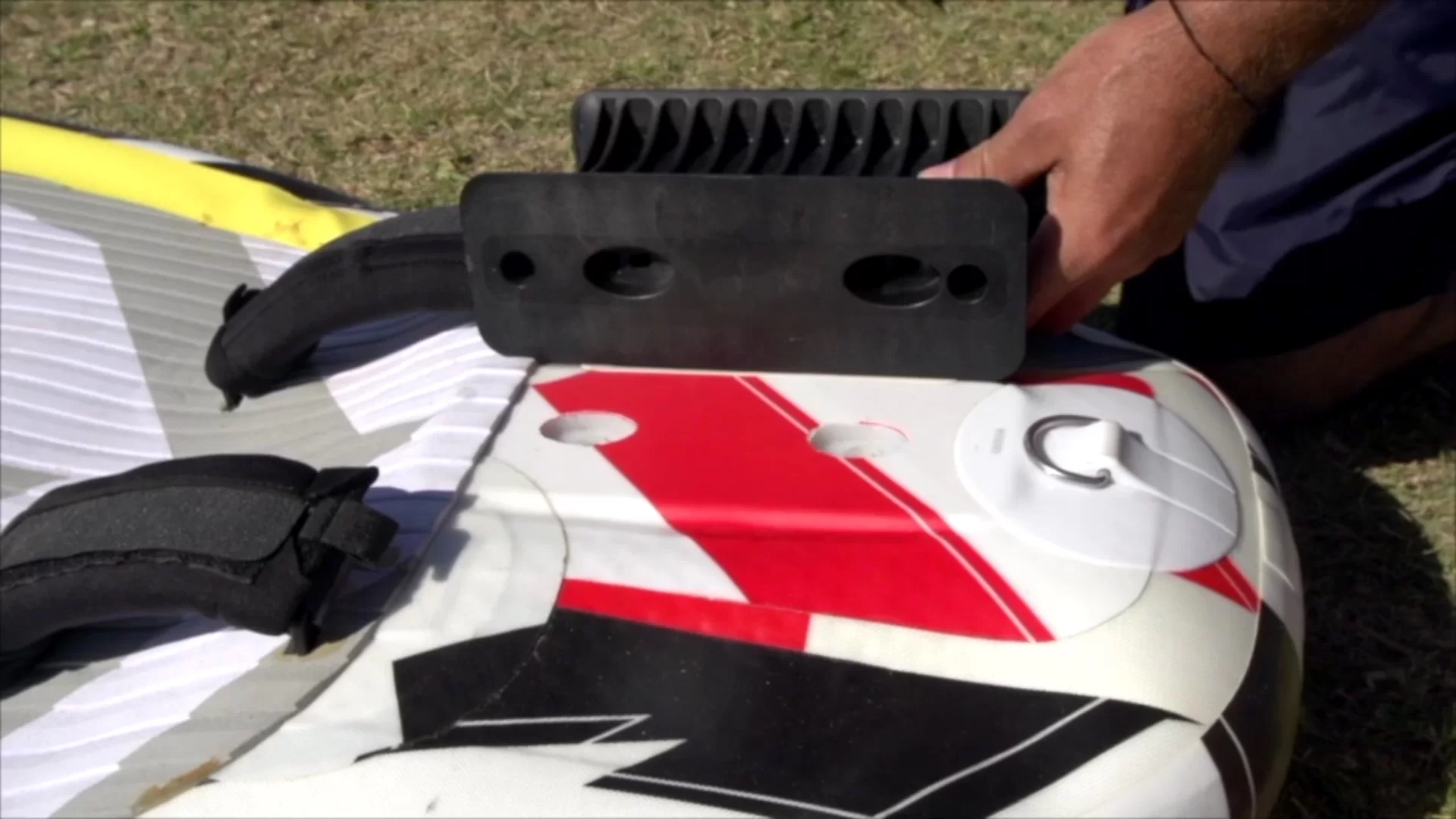
- Daggerboard. Some inflatable beginner boards have a large retractable centre-fin. This gives superb stability and close-hauled performance. The trade-off is increased size, weight and price.
PVC rail
Most iWindsurf boards have a sharp PVC rail. This gives the board more grip on the water and helps to reduce sideways drift. The sharp rail also enables cleaner water release at higher speeds, making the board suitable for planing.
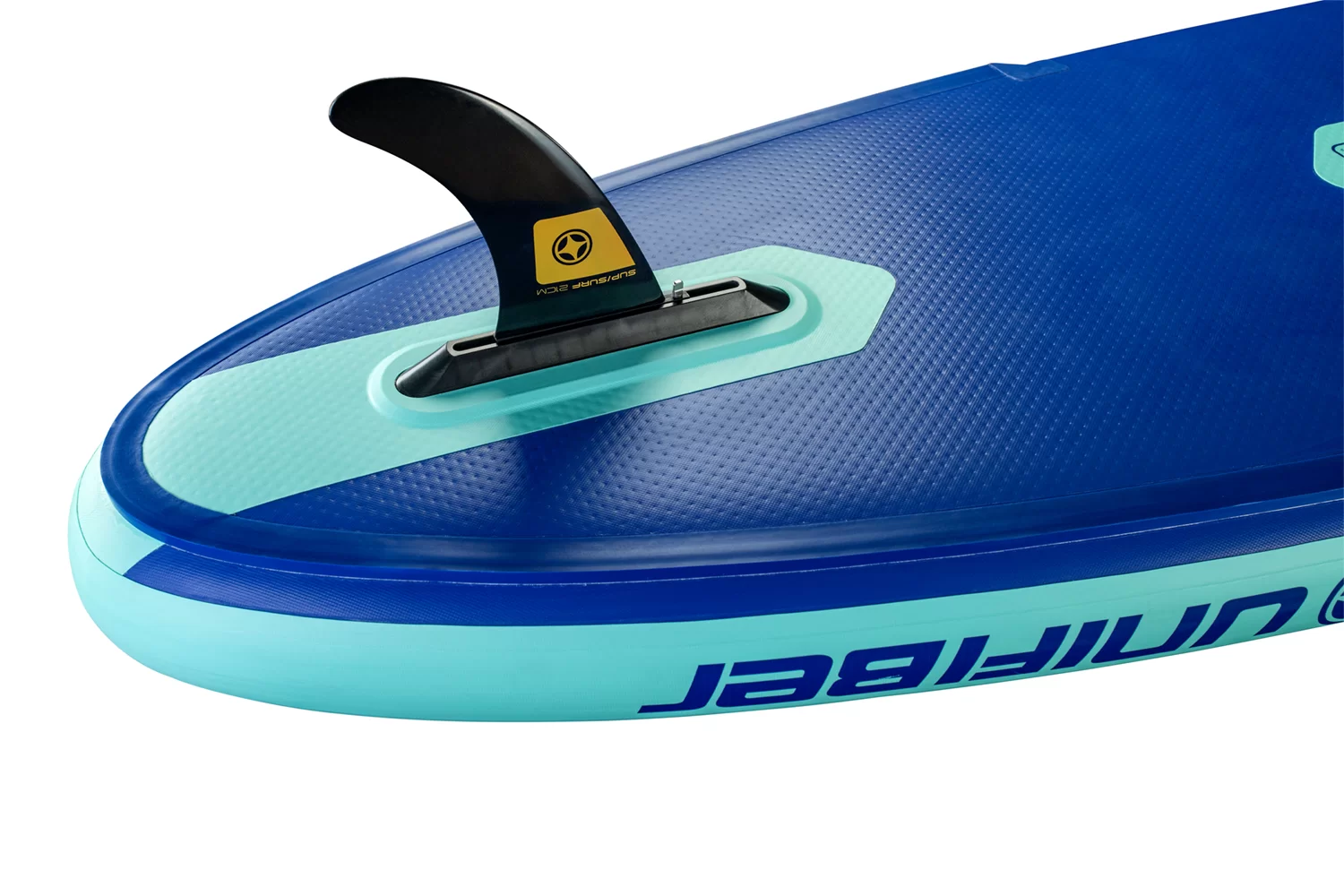
EVA deck grip
The EVA foam that’s used for the deck grip comes in different qualities and patterns. Most types offer plenty of grip. But it’s wise to check on this point, because a slippy board can spoil your fun.
Inflatable boards always have a flat deck. The premium Unifiber iWindsurf boards feature an elevated EVA deck that mimics the curved shape of a hard board and offers improved control and ergonomics.
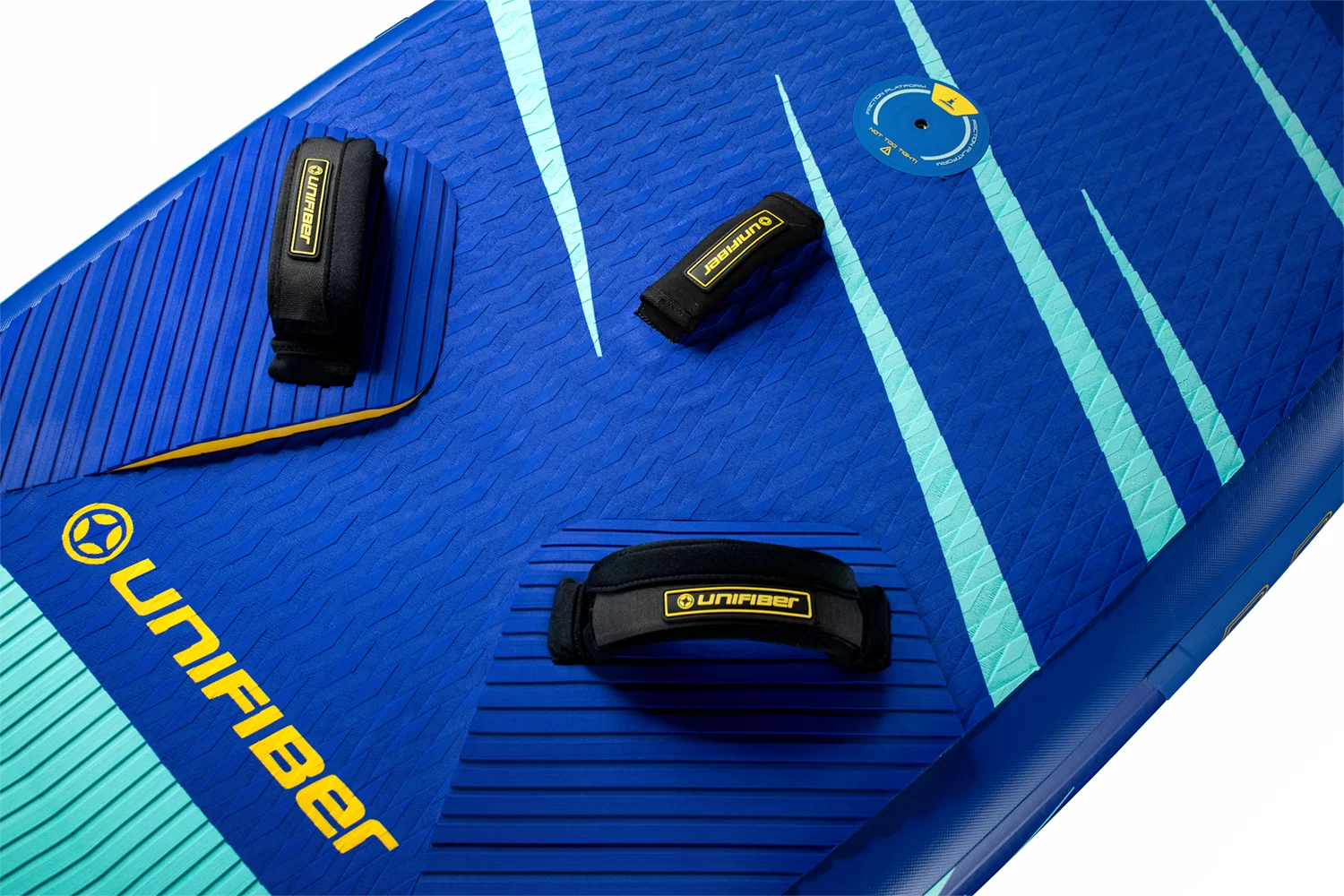
Why Choose Unifiber iWindsurf?
Unifiber strives to offer a versatile and budget-friendly alternative to common hard-body beginner and freeride boards. The result – our iWindsurf range – combines fun, exciting, accessible windsurfing with a package that is compact and easy to carry around.
We maintain a extremely high standard of quality control. In addition to numerous checkpoints during manufacturing we do a final 72-hour test to check for any possible leakage. For every single board.
Fusion Composite Dropstitch technology is used in our boards to provide top-rated strength and stiffness, and minimal weight.
Unifiber also offers a comprehensive 1-year unconditional warranty on all iWindsurf models and 2-years coverage for manufacturing faults.